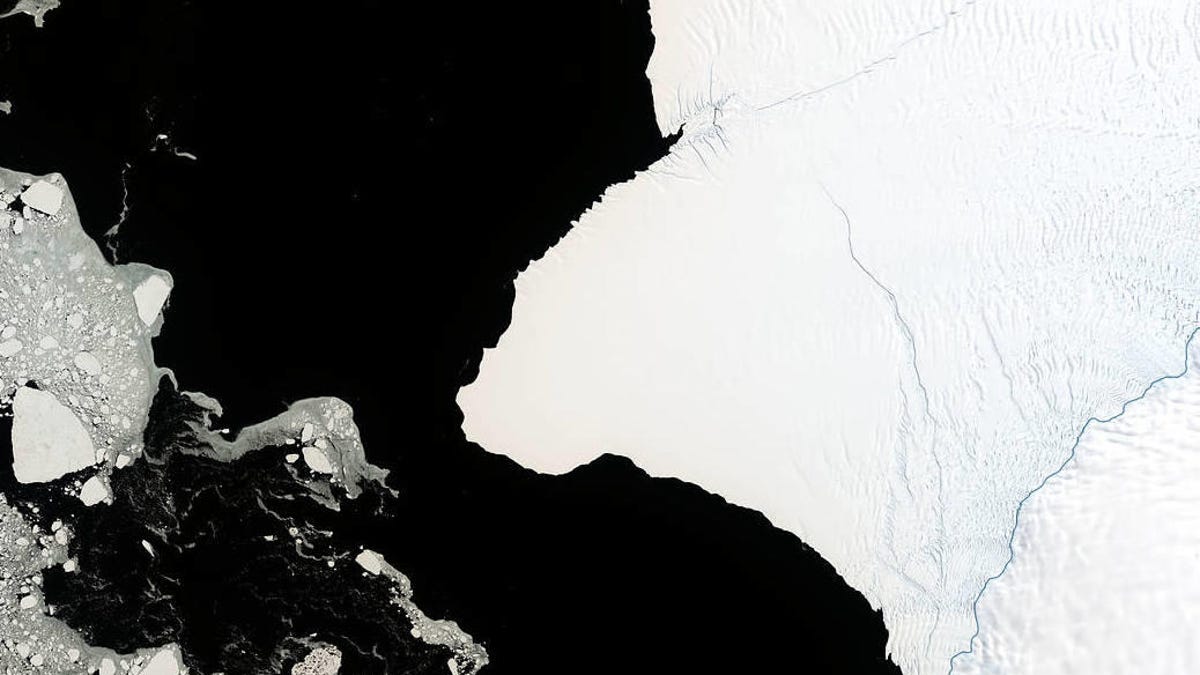NASA eyes colossal cracks in ice shelf near Antarctic station
The Brunt ice shelf is preparing to unleash an iceberg twice the size of New York City.
Things are looking dicey along the Brunt Ice Shelf, home to the British Antarctic Survey's Halley VI Research Station. NASA is keeping an eye on some growing cracks threatening to unload an iceberg soon.
NASA/USGS Landsat satellites are monitoring the action as the cracks grow. When the iceberg calves, it could be twice the size of New York City. That would make it the largest berg to break off the Brunt ice shelf since observations of the area began in 1915.
This annotated image shows the cracks and the location of the Halley VI station, along with the location of the closed Halley IV station.
An annotated view of the ice shelf shows the cracks as they relate to the Halley VI station. The crack leading up the middle is especially concerning. It's been stable for 35 years, but NASA says it's now extending northward as fast as 2.5 miles (4 kilometers) per year.
As of December, Halley station was home to around 30 science and technical staff on missions to study the ice shelf and climate change in the polar region. The BAS completed a relocation of the futuristic-looking Halley station in 2017, placing it farther away from the unpredictable cracking.
"It is not yet clear how the remaining ice shelf will respond following the break, posing an uncertain future for scientific infrastructure and a human presence on the shelf that was first established in 1955," NASA says. Researchers are concerned the ice shelf could become unstable or break up.
NASA says iceberg calving is "a normal part of the life cycle of ice shelves, but the recent changes are unfamiliar in this area."
The ice shelf had been fairly stable since British explorer Ernest Shackleton surveyed its coast in 1915. Now its future is uncertain.


